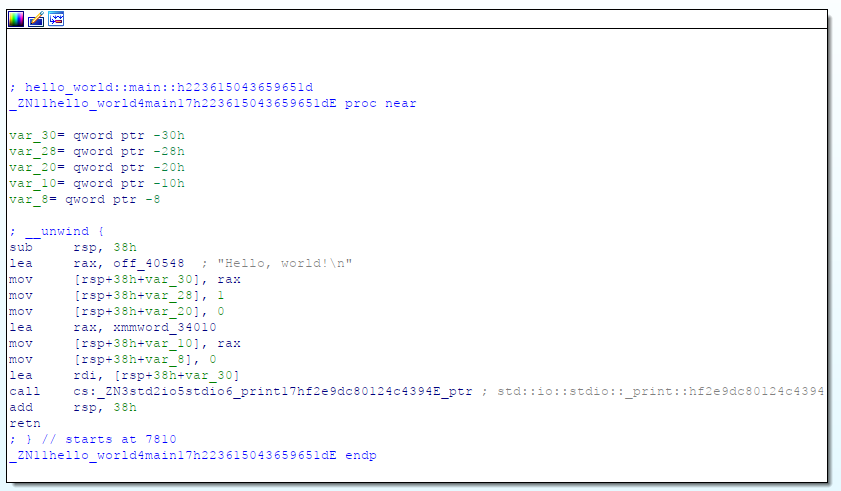Rust Reversing 1: Hello, world!
There’s plenty of decompilers for most compiled languages, but what about rust? I couldn’t find one, so let’s try to understand what the resulting code looks like, in the hopes of creating a decompiler. Might help out somebody going against an odd malware author who’s decided that rust makes sense (it doesn’t).
Fair warning, this is my first dive into assembly reverse engineering since I did basic crackmes a few years ago, so be prepared for vagueness while I’m trying to learn.
First beginnings
Hello World!
Let’s begin with the standard hello world.
fn main() {
println!("Hello, world!");
}
First of all, rust makes clear that most of the functions are std, alloc and core functions, making our job a bit easier.
The program starts at _start, just sets up a little and then calls the main function.

Here rust again sets up more of the stack, calls the actual main function, and then calls std::rt::lang_start_internal, which seems to provide panic stack unwinding.

Finally, we get to "Hello, world!\n". Load the string, load some arguments and then call std::io::print.

Little side note, the Hex-Rays decompiler completely misses the "Hello, world!\n". Rust is an obfuscator I guess.
void hello_world::main::h223615043659651d()
{
std::io::stdio::_print::hf2e9dc80124c4394();
}